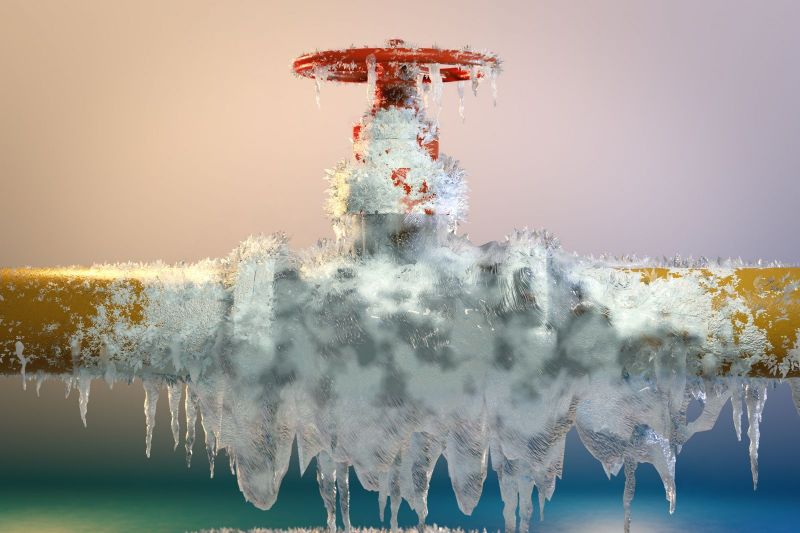Frozen pipes can be a significant problem, especially during the winter season. In fact, according to the Insurance Institute for Business and Home Safety, the average cost of a frozen pipe claim is around $10,000. It’s no surprise that homeowners fear the possibility of dealing with a frozen pipeline. But what happens after a frozen pipeline, and how can you fix the problem?
The first thing to do when you suspect a frozen pipeline is to turn off the water supply to your home. This will prevent further damage to your pipes and give you time to assess the situation. Next, check your pipes to determine the location of the blockage. If you can access the frozen pipe, you can use a hair dryer, heat lamp, or hot towel to thaw the ice. Be careful not to use an open flame as this can cause a fire. You can also try wrapping the pipe with heat tape or an electric heating pad.
If you cannot access the frozen pipe, or you do not feel comfortable thawing the ice yourself, call a licensed plumber. They have the necessary equipment and expertise to fix the problem without causing further damage to your pipes.
After a frozen pipeline has been fixed, you may notice some changes in your water pressure. This is because the ice blockage may have caused some damage to your pipes. If you notice a decrease in water pressure, it is important to have your pipes inspected by a licensed plumber. They can assess the damage and make any necessary repairs to ensure that your pipes are working properly.
In addition to a decrease in water pressure, you may also notice a spike in your water bill after a frozen pipeline. This is because the ice blockage can cause leaks in your pipes, which can lead to wasted water and higher bills. If you notice a significant increase in your water bill, it is important to have your pipes inspected by a licensed plumber.
Preventing frozen pipelines is always the best course of action. Here are some steps you can take to prevent frozen pipes in the future:
Insulate your pipes: Insulate your pipes to protect them from the cold. You can use foam insulation, heat tape, or pipe sleeves to keep your pipes warm.
Keep your home warm: Keep your home at a temperature of at least 55 degrees Fahrenheit to prevent your pipes from freezing.
Drip your faucets: Drip your faucets to keep the water flowing and prevent your pipes from freezing.
Open cabinet doors: Open cabinet doors to allow warm air to circulate around your pipes.
Shut off outdoor water: Shut off outdoor water and drain your pipes to prevent them from freezing.
In conclusion, dealing with a frozen pipeline can be stressful and costly. However, by taking the necessary precautions and calling a licensed plumber if necessary, you can minimize the damage and prevent frozen pipes in the future. Remember to always prioritize the safety of your home and your family.

